Polimik (10 coated tablets)
$15.10
Description
The instruction for medical use
of POLIMIK® medicine
the Trade name
of Polimik®
the International unlicensed name
Is not present
the Dosage form
of the Tablet, coated
Structure
One tablet contains
active agents: ofloxacin of 200 mg,
ornidazol 500 mg,
excipients: microcrystalline cellulose, sodium starch stearate, water purified
structure of a cover glikolit (type A), K-30 povidone, magnesium: Opadray 03B53217 orange (FD&C yellow No. 6 aluminum varnish (AP0072), polyethyleneglycol, FD&C yellow No. 6 aluminum varnish (AP0024), gipromelloz, titan dioxide (E 171)).
The description
of the Tablet, capsulovidny form, coated orange color, with risky on one party.
Pharmacotherapeutic group
Antibacterial drugs for system use. The combination of germicides
the ATX J01RA Code
the Pharmacological
Pharmacokinetics Ofloxacin properties is almost completely and quickly absorbed from the digestive tract (DT). Food can slow down absorption, but not have significant effect on bioavailability. Bioavailability over 96%. The maximum concentration is reached within 1-2 hours and depends on a dose: after single dose of 200 mg and 400 mg it makes 2.5mkg/ml and 5.0 mkg/ml respectively. The seeming distribution volume – 100 l. Linking with proteins of plasma makes 25%.
Distribution: cells (leukocytes, alveolar macrophages), skin, soft tissues, bones, abdominal organs and a small pelvis, the respiratory system, urine, saliva, bile, a prostate secret, well gets through a blood-brain barrier, a placental barrier, cosecretes with maternal milk. Gets into cerebrospinal fluid at the inflamed and uninflammed meninx (14-60%).
Elimination half-life makes 6-7 hours. About 90% in not changed view mainly with urine are removed. Less than 5% of the accepted dose are restored in urine in the form of N-oxide or desmetit metabolites. 4-8% of a dose of an ofloksatsin are allocated with a stake. It indicates the low level of bilious excretion of an ofloksatsin.
The clearance of an ofloksatsin is reduced at patients with the broken renal function (standard of clearance of creatinine & lt, 50 ml/min.) therefore dose adjustment is necessary.
Ornidazol after intake honor all it is soaked up from digestive tract. After reception of an oral dose of 1.5 g the maximum concentration in blood plasma, equal 30 mkg/ml, are reached within 3 hours and decreases to 9 mkg/ml and 2.5mkg/ml within 24 and 48 hours, respectively. After reception of an oral dose of 750 mg the maximum concentration in blood plasma, equal 11 mkg/ml, was reached during from 2 to 3 hours after reception. After reception of an oral dose of 500 mg the maximum concentration in blood plasma, equal 7, 8. and 7 mkg/ml, it was reached during the periods at 1, 2 and 4 hours respectively.
Linking of an ornidazol with proteins of blood plasma makes about 15% and less. Ornidazol well gets into spinal and other liquids and body tissues. Concentration of an ornizadol in vaginal liquid approximately same, as in blood plasma, is also reached 24 hours later after reception of a single oral dose. The volume of distribution is equal to about 0.9 l/kg.
Ornidazol is metabolized mainly in a liver, generally by hydrolysis and an oksidation. 5 metabolites of an ornidazol, two of which have antibacterial activity, are established, but are less active concerning Trichomonas vaginalis and anaerobic bacteria, than not changed ornidazol.
The most part of an ornidazol is excreted in urine in the form of metabolites, and about 4% of a dose are allocated in not changed look. The clearance of an ornidazol is of blood plasma from 45 to 50ml/min. Through digestive tract about 22% of an oral dose are removed. Biliary excretion of an ornidazol and its metabolites is sometimes observed. Elimination half-life of an ornidazol – from 11 to 14 hours. Elimination half-life of an ornidazol and its main metabolites of M1 and M2 is extended at patients with abnormal liver functions.
The pharmacodynamics
of Polimik® – the combined drug, possesses antibacterial and antiprotozoan action.
Ofloxacin belongs to group of ftorkhinolon. Bactericidal action, as well as at other ftorkhinolon, is defined by its ability to inhibit DNK-girazu enzyme, to oppress cell fission, to cause structural changes of cytoplasm of cells of microorganisms. Ofloxacin has a broad spectrum of activity.
Influences mainly gram-negative and some gram-positive microorganisms, including resistant to penicillin, aminoglycosides, cephalosporins, streptocides.
The spectrum of action of an ofloksatsin extends to the following species of microorganisms:
It is active concerning the microorganisms producing beta lactamelements and fast-growing atypical mycobacteria.
Are highly sensitive to drug: E.coli, Klebsiella spp., including Klebsiella pneumonia, Proteus mirabilis, Proteus vulgaris, Serratia spp., Enterobacter spp., Providencia spp., Citrobacter spp., Salmonella spp., Shigella sonnei, Yersinia spp., Vibrio spp., Neiseria gonorrhoeae, Neiseria meningitidis, Haemophilis influenzae, Haemophilis ducreyi, Aeromonas hydrophila, Bordetella parapertussis, Bordetella pertussis, Moraxella catarrhalis, Propionibacterium acnes, Staphylococcus spp., Staphylococcus aureus, Legionella spp., Brucella spp., Chlamidia trachomatis, Mycoplasma spp., fast-growing atypical mycobacteria and also the bacteria developing beta lactamelements.
Are moderately sensitive to an ofloksatsin: Acinetobacter spp., Enterococci, Streptococcus spp. (including pneumococci), Clostridium perfringens, Corynebacteriumspp., Campylobacter spp., Helicobacter pilori, Listeria monocytogenes, Pseudomonasaeruginosa, Gardnerella vaginalis, Mycobacterium tuberculosis, Ureaplasma urealyticum.
Anaerobic microorganisms (except V. of urealiticus), including the majority of types of bacteroids, clostridiums, actinomycetes, fuzobakteriya, enterococci, metitsillinorezistentny stafilokokk, nokardiya are resistant to drug.
Treponema pallidum, viruses, mushrooms and protozoa are insensitive to drug.
Ornidazol – active agent of the drug Polimik® antiprotozoan means, derivative 5 nitroimidazoles, interacting with DNA of a microbic cell, causes disturbance of its helical structure, a rupture of threads, suppresses synthesis of nucleic acids and causes death of microbic cells and cells of protozoa. Ornidazol is effective at treatment of the protozoan infections caused by Trichomonas vaginalis, Gardnerella vaginalis, Giardia lamblia and Entamoeba histolytica and also concerning some causative agents of mephitic gangrenes – Peptostrepococcus, Peptococcus, Bacteroides, Clostridium and Fusobacterium (the minimum inhibiting concentration & lt, 4mkg/ml).
Indications
Treatment of the multi-infections caused by activators (microorganisms and protozoa), sensitive to drug components:
– disease of an urinogenital system: the acute and chronic pyelonephritis, prostatitis, cystitis, an epididymite complicated or recurrent infections of urinary tract,
– diseases, sexually transmitted.
The route of administration and doses
of Polimik should be applied inside, without chewing, washing down with water. It is allowed to use drug both to, and after meal.
The dose of drug and duration of treatment depend on sensitivity of microorganisms, weight and a type of infectious process. The dose for adults – on 1 tablet 2 times a day within 5 days then to continue therapy of 2-5 more days with tablets of an ofloksatsin. It is necessary to continue treatment not less than 3 days after disappearance of clinical symptoms of a disease.
Side effects
from a digestive tract: the abdominal pain, nausea, vomiting, diarrhea, anorexia, a coloenteritis, in the isolated cases hemorrhagic, a hypoglycemia at patients with diabetes who receive hypoglycemic drugs were observed cases of a perversion of flavoring feelings, tranzitorny increase in bilirubin and liver enzymes in blood plasma, in isolated cases – hepatitis. There is a risk of developing pseudomembranous colitis. From nervous system: excitement, dizziness, a headache, sleep disorders (insomnia or drowsiness), bright dreams up to nightmares, disturbance of peripheral sensitivity or a lack of coordination, disturbance from central nervous system, a tremor, rigidity, spasms, fatigue, a temporary loss of consciousness, symptoms of the touch or mixed peripheral neuropathy, paresthesia, psychotic reactions (visual and auditory hallucinations), extrapyramidal disorders and lacks of coordination, a diplopia, disturbances of color perception, disturbance of taste, sense of smell, hearing and balance, sonitus, a hearing loss, nightmares, a depression, disturbances of muscular coordination, in some cases psychotic reaction with changes of behavior, including the suicide ideas or actions, reduction in the rate of reactions, the general weakness, uncertainty of movements, muscular spasms.
From the system of a hemopoiesis: anemia, a leukopenia, an eosinophilia, thrombocytopenia, a pancytopenia, an agranulocytosis, in isolated cases – hemolytic anemia, oppression of marrow.
Disturbances from kidneys: in some cases – acute interstitial nephrite or disturbance of discharge of nitrogen with some increase in urea and creatinine, an acute renal failure. Disturbances from a liver: increase in activity of liver enzymes (ALAT, ASAT, SF, gamma glutamiltransferazy) and/or bilirubin, cholestatic jaundice, in the isolated cases hepatitis, even very heavy degree
from a cardiovascular system: hypotension, tachycardia.
Musculoskeletal reactions: tendinites, especially at patients of advanced age. Also the arthralgia, myalgia, a rupture of sinews are possible (Achilles), as well as at use of other ftorkhinolon these side reactions can arise in 48 hours after an initiation of treatment and there can be bilateral, in the isolated cases a rhabdomyolysis and/or a myopathy, muscle weakness, especially at patients with myasthenia gravis.
Disturbances from skin: skin rash, an itching, a small tortoiseshell, pustulous rashes, a photosensitization, a Quincke’s disease, in isolated cases – a multiformny erythema, Stephens-Johnson’s syndrome (polymorphic bullous erythema), a Lyell’s disease (toxic epidermal necrolysis), a photosensitization, a purpura, a vasculitis which in exceptional cases can lead to skin necrosis.
Disturbances from the immune system: bronchospasm, asthma, anaphylactoid reactions, acute anaphylaxis. Others: burning in eyes, cough, Qatar of a nose, inflows, perspiration, development of a resistant infection and fungal infection, in some cases an allergic pneumonitis, porphyria attacks at patients with a porphyria.
Contraindications
– hypersensitivity to drug components, other ftorkhinolona, nitroimidazoles
– epilepsy, damage of the central nervous system with the lowered convulsive threshold, organic diseases of the central nervous system, disturbance of cerebral circulation (after the suffered craniocereberal injuries, a stroke, inflammatory processes of a brain and a meninx), atherosclerosis of vessels of a brain
– multiple sclerosis
– deficit glyukozo-6-fosfatdegidrogenazy
– ruptures of sinews after use of ftorkhinolon in the anamnesis
– tendinites in the anamnesis
– lengthening of an interval of QT
– a noncompensated hypopotassemia
– chronic kidney disease
– a serious illness of a liver, a liver failure
– simultaneous use of antiarrhytmic means of the class IA (zinidin, procaineamide) or class III (Amiodaronum, sotalol), antidepressants, macroleads
– pathological defeats of blood or other hematologic anomalies
– pregnancy and the period of a lactation
– children’s and teenage age up to 18 years
Medicinal interactions
At simultaneous use of an ofloksatsin with antihypertensive drugs perhaps sharp lowering of arterial pressure. In similar cases or if to apply ofloxacin to carrying out anesthesia barbiturates, it is necessary to carry out monitoring of function of a cardiovascular system.
It is contraindicated to apply ofloxacin along with drugs which extend QT interval (antiarrhytmic means of the class IA – quinine, procaineamide, and class III – Amiodaronum, sotalol, tricyclic antidepressants, macroleads).
Simultaneous use of an ofloksatsin with non-steroidal anti-inflammatory drugs (including derivatives of fenilpropionovy acid), derivatives of a nitroimidazole and methylxanthines increases risk of development of nephrotoxic effects, decrease in a convulsive threshold that can lead to development of spasms. When developing spasms, drug should be cancelled.
Non-steroidal anti-inflammatory drugs can enhance the stimulating effect of drug on the central nervous system.
Simultaneous use of an ofloksatsin in high doses with medicines which are emitted by tubular secretion can lead to increase in concentration in blood plasma because of decrease in their removal.
As simultaneous use of the majority of hinolon, including ofloxacin, inhibits enzymatic activity of P450 cytochrome, simultaneous use of an ofloksatsin with drugs which are metabolized by this system (cyclosporine, theophylline, methylxanthine, caffeine, warfarin), prolongs elimination half-life of the specified medicines.
Equilibrium concentration of theophylline in blood serum, elimination half-life and risk of teofilin-dependent undesirable reactions can grow at simultaneous use with the drug Polimik. Theophylline level in blood serum needs to be checked carefully and to adjust a dosage of theophylline in case of need at simultaneous use with the drug Polimik. Undesirable reactions (including attacks) can arise at increase in level of theophylline in blood serum or without it.
If Polimik® apply together with warfarin or its derivatives, it is necessary to control carefully a prothrombin time or to carry out the corresponding coagulative test.
If to apply hinolona along with other drugs which reduce a threshold of convulsive readiness, for example, with theophylline the additional reduction of the threshold of convulsive readiness of a brain can be observed though it is considered that ofloxacin, unlike some other ftorkhinolon, does not enter pharmacokinetic interaction with theophylline.
At simultaneous use of an ofloksatsin and antagonists of vitamin K it is necessary to exercise constant control of a system of fibrillation.
Simultaneous use of drug with antacids which contain calcium, magnesium or aluminum with sukralfaty, with bivalent or trivalent iron, with multivitamins which incorporate zinc, reduces intensity of absorption of an ofloksatsin. Therefore the interval between intake of these drugs has to make not less than 4 hours.
At simultaneous use of an ofloksatsin with oral hypoglycemic means and insulin the hypoglycemia or a hyperglycemia therefore it is necessary to carry out monitoring of parameters for their compensation is possible. At simultaneous use with glibenclamide the increase in level of glibenclamide in blood serum is possible.
At use with the drugs alkalizing urine (karboangidraza inhibitors, citrates, sodium bicarbonate), the risk of a crystalluria and nephrotic effects increases.
Simultaneous use of an ofloksatsin with probenetsidy, Cimetidinum, furosemide, a methotrexate leads to increase in concentration of an ofloksatsin in blood plasma and to increase in risk of its toxic action.
Ofloxacin can suppress growth of Mycobacterium tuberculosis and show false-negative results at a bacteriological research for diagnosis of tuberculosis.
During the laboratory researches. During treatment ofloksatsiny false positive results at identification of opiates or porphyrines in urine can be observed. Therefore it is necessary to use more specific methods.
The interactions connected with ornidazoly.
Unlike other derivatives of a nitroimidazole, ornidazol does not suppress an aldegiddegidrogenaza, however Polimik® should not be applied along with alcohol. Ornidazol strengthens effect of oral anticoagulants of a coumarinic row that can increase risk of hemorrhage therefore demands the corresponding correction of their dosing.
Ornidazol prolongs myorelaxation action a bromide vekuroniya.
Combined use of phenobarbital and other inductors of enzymes reduces the period of circulation of an ornidazol in blood serum while inhibitors of enzymes (for example, Cimetidinum) raise.
Special instructions
Before an initiation of treatment need to be carried out tests: crops on microflora and determination of sensitivity to an ofloksatsin.
Dysfunction of the central and peripheral nervous system. Drug should be taken with caution the patient with disturbances of the central nervous system that leads to decrease in a convulsive threshold (epilepsy).
If there are attacks of spasms, drug needs to be cancelled.
Strengthening of disturbances from the central or peripheral nervous system can be observed during performing drug treatment. In case of developing of peripheral neuropathy, lacks of coordination of movements (ataxy), dizziness or turbidity of consciousness it is necessary to stop treatment.
With care it is necessary to use drug at patients with atherosclerosis of vessels of a brain.
Renal failure.
At use of the drug Polimik® it is necessary to support adequate hydration (patients have to use enough water) for prevention of a kristalouriya.
Patients with a renal failure should appoint drug with care (it is not necessary to exceed an average daily dose) and it is necessary to carry out monitoring of laboratory indicators of function of kidneys. For patients with reduced function of kidneys the appointed dose of an ofloksatsin needs to be adjusted, considering the slowed-down discharge.
Hemodialysis.
In case of carrying out a hemodialysis it is necessary to consider reduction of elimination half-life and to appoint additional doses of drug to or after a hemodialysis.
Abnormal liver function.
Patients with an abnormal liver function should appoint drug with care (because of a possibility of deterioration in function of a liver) and it is necessary to carry out monitoring of laboratory indicators of function of a liver. Against the background of treatment of a ftorkhinolonama the development of fulminantny hepatitis, liver failure is possible (including lethal outcomes). Patients should stop treatment and to see a doctor if there are such symptoms and symptoms of a disease of a liver as anorexia, jaundice, darkening of urine, an itching or morbidity of a stomach at a palpation (see the section “Side reactions”).
Patients with severe damages of a liver (cirrhosis) should not exceed an average daily dose.
The diseases caused by Clostridium difficile. Diarrhea, especially heavy, steady or with blood impurity, during or after the Polimik® drug treatment can be a symptom of pseudomembranous colitis.
At suspicion of pseudomembranous colitis the drug Polimik® should be cancelled immediately and without delay to begin the corresponding symptomatic anibiotikoterapiya (for example with Vancomycinum, teykoplaniny or metronidazole). In such situation the drugs suppressing an intestines vermicular movement are contraindicated.
Tendinitis. In case of such side reaction as a tendinitis consultation of the orthopedist is necessary for the solution of a question of treatment continuation.
Ftorkhinolona, including ofloxacin, increase risk of tendinites and a rupture of a sinew at any age. This side effect touches more often an Achilles tendon which rupture can demand surgical intervention. The remote risk of developing tendinites and a rupture of a sinew increases at patients aged from 60 years which take the corticosteroid drugs and at patients is after transplantation of kidneys, heart and lungs. Except age and reception of corticosteroids there are factors which independently increase risk of a rupture of a sinew – vigorous physical activity, a renal failure, and the damages of a sinew received earlier, such as pseudorheumatism.
Lengthening of an interval of QT. Some quinolines, including ofloxacin, can extend QT interval on the electrocardiogram and cause isolated cases of arrhythmia. Not to appoint drug at the known lengthenings of an interval of QT, namely: at patients of advanced age, at not modified disturbance of electrolytic balance (hypopotassemia, a hypomagnesiemia), at a congenital syndrome of the extended QT interval, at the acquired lengthening of an interval of QT, in heart diseases (for example, heart failure, a myocardial infarction, bradycardia).
At use of high doses of drug and in case of treatment the clinical and laboratory monitoring is recommended to spend over 10 days.
Disturbance from blood.
In the presence in the anamnesis of disturbances from blood the control of leukocytes is recommended, especially when carrying out repeated courses of treatment.
Antagonists of vitamin K.
Because of possible increase in indicators of coagulative tests (a prothrombin time / the international normalized relation) and/or bleedings at patients who receive ftorkhinolona in a combination with antagonists of vitamin K (for example, warfarin) at simultaneous use of these two groups of medicines it is necessary to carry out monitoring of results of coagulative tests (see the section “Interaction with Other Medicines and Other Types of Interactions”).
Hypersensitivity to ftorkhinolona. It was reported about hypersensitivity and allergic reactions to ftorkhinolona after the first use. Anaphylactic and anaphylactoid reactions can pass into shock that poses a threat for life, even after the first use. In that case the drug Polimik® it is necessary to cancel and begin the corresponding treatment.
Photosensitization. Patients who use the drug Polimik® should avoid solar radiation and UV rays (sunbed) because of a possible photosensitization. At emergence of reactions of photosensitivity (for example, similar sunblisters) the drug Polimik® should stop therapy.
Arterial hypotension.
In case of developing of heavy arterial hypotension it is necessary to stop drug Polimik® use.
Patients with psychotic disorders or mental diseases in the anamnesis. Emergence of psychotic reactions which can progress to suicide thoughts, self-destructive behavior, including suicide attempts, sometimes even after single dose of drug is possible. If at the patient these reactions develop, it is necessary to cancel drug and to undertake appropriate treatment. It is necessary to use with care drug to patients in whose anamnesis there are mental disorders, or to patients with mental diseases.
Diabetes.
At use of hinolon the development of a hypoglycemia, usually at patients with diabetes who receive the accompanying treatment by oral sugar-lowering drug (for example, glibenclamide) or insulin is possible. At such patients with diabetes it is recommended to carry out careful monitoring of level of glucose in blood.
Development of consecutive infection. At long-term or repeated treatment by antibiotics development of opportunistic infections and growth of resistant microorganisms is possible. At development of consecutive infection it is necessary to take the appropriate measures.
Exacerbation of a candidiasis which will demand the corresponding treatment can be observed.
Resistance of some strains of Pseudomonas aeruginosa. During the Polimik® drug treatment, as well as other medicines from group of ftorkhinolon, the resistance of some strains of Pseudomonas aeruginosa can develop quickly enough.
The pneumonia caused by pneumococci or mycoplasmas, the tonsillar tonsillitis caused by β-hemolytic streptococci. The drug Polimik® is not choice drug for treatment of patients with these diseases.
The drugs containing magnesium, aluminum, iron, zinc and sukralfat. It is not recommended to take the drug Polimik® within 4 hours after administration of drugs containing magnesium, aluminum, iron, zinc and sukralfat.
Alcohol intake. During the Polimik® drug treatment it is not necessary to take alcoholic beverages.
Myasthenia gravis. It is necessary to use with care the drug Polimik® to patients in whose anamnesis there is a myasthenia gravis.
Except for very exceptional cases (for example, separate disturbances of sense of smell, taste and hearing), all side effects of drug disappear after its cancellation.
In case of development of side effects, especially from nervous system, allergic reactions which can arise right after the first reception drug needs to be cancelled.
Therapy by lithium. Concentration of salts of lithium, creatinine and concentration of electrolytes need to be controlled in the course of therapy use by lithium.
The effect of other medicines can be strengthened or weakened during the Polimik® drug treatment.
Insufficiency glyukozo-6-fosfatdegidrogenazy. Patients with the latent or confirmed insufficiency glyukozo-6-fosfatdegidrogenazy can be prone to hemolytic reactions at treatment of a hinolonama. It is necessary to appoint the drug Polimik® to such patients with care.
Excipients.
Drug contains azoic dye a yellow decline of FCF (E 110) which can cause allergic reactions.
Features of influence of medicine on ability to run the vehicle or potentially dangerous mechanisms
to Patients who run vehicles work with machines and mechanisms, it is necessary to take into account possible undesirable effects from nervous system (dizziness, drowsiness, confusion of consciousness, a visual disturbance and hearing, disorder of processes of the movement). Delay of speed of response is aggravated at simultaneous alcohol intake.
Overdose
Symptoms: dizziness, confusion of consciousness, epileptiform spasms, block, disorientation, drowsiness.
Reactions from digestive tract are followed by nausea, vomiting, an abdominal cavity pain, erosive injuries of mucous membranes.
Treatment: gastric lavage, the disintoxication, desensibilizing and symptomatic therapy directed to correction of changes from internals. There is no antidote. In spasms appoint diazepam. At a hemodialysis 10 – 30% of drug are removed.
Forms of release and packing
On 10 tablets place in blister strip packaging from a film of polyvinylchloride and aluminum foil.
On 1 or 10 blister strip packagings together with the instruction for medical use in the state and Russian languages place in a cardboard box (1×10), (10×10).
To Store storage conditions in the dry, protected from light place, at a temperature not above
25ºС.
To store out of children’s reach!
3 years
not to use a period of storage after the termination of the expiration date specified on packing!
Prescription status
According to the prescription
the Producer Kusum Heltker Pvt.
Ltd., JV 289 (A), Riiko Indl. Chopanki’s Area, Bkhivadi (Raj.), India
Owner of the registration certificate
Kusum Heltker Pvt. Ltd., India
the Address of the organization accepting in the territory of the Republic of Kazakhstan claims from consumers but to quality of products (goods)
of Dr_-Pharm LLP, Kazakhstan, Almaty, the ave, Dostyk, 117/6,
BC Khan Tengri, ph. / fax: 295-26-50, 295-26-55
To develop





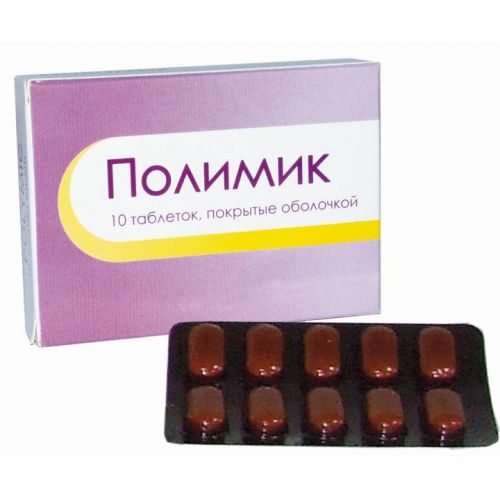
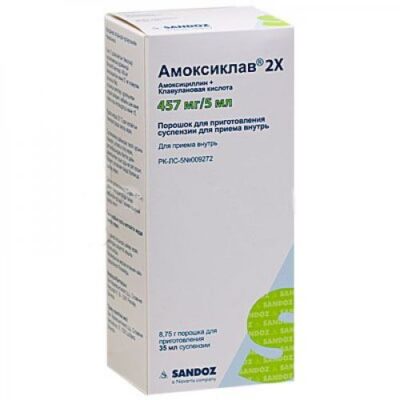
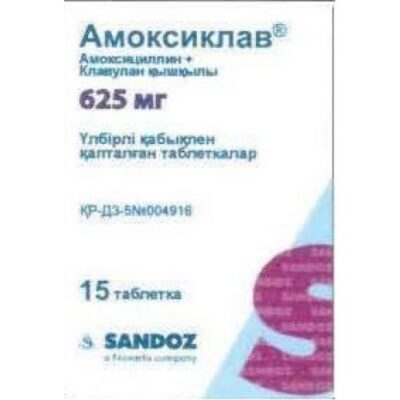
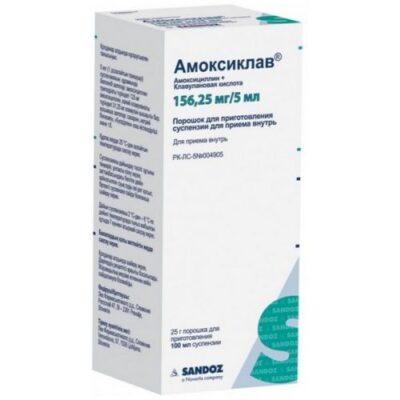
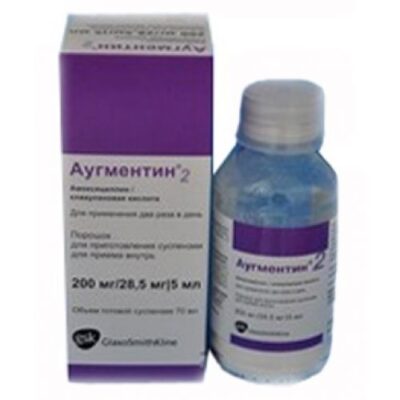
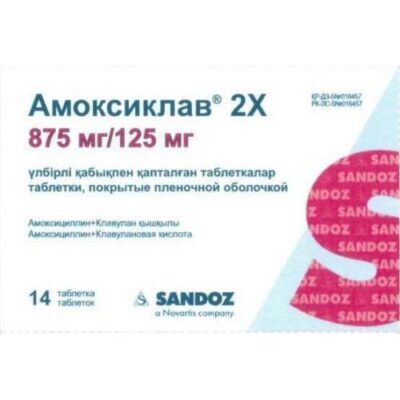
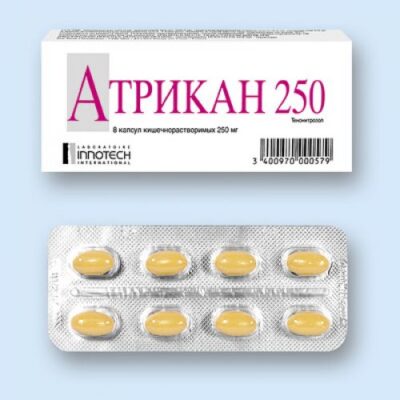
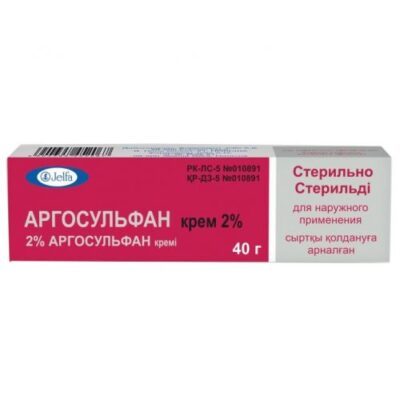
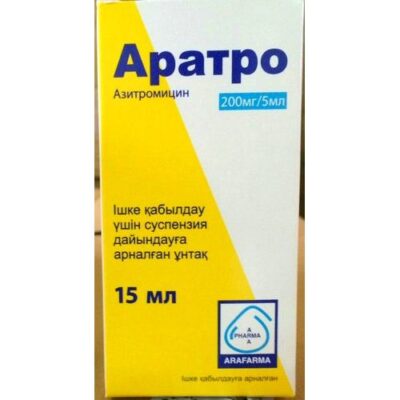
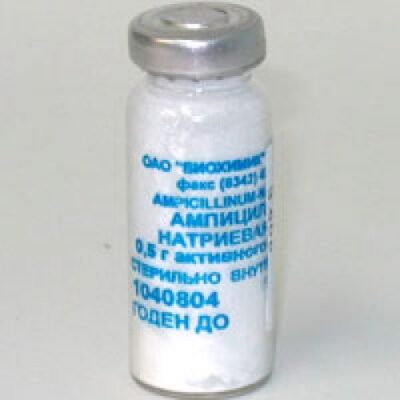
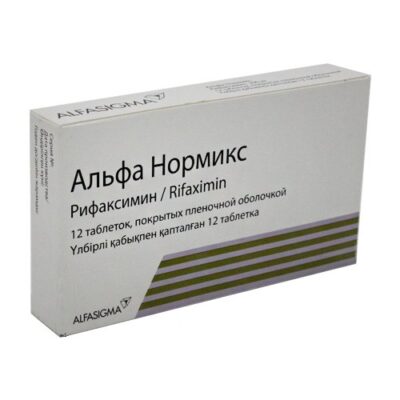






Reviews
There are no reviews yet.